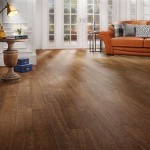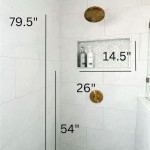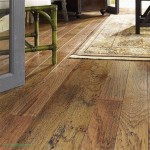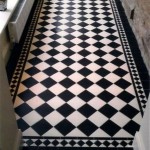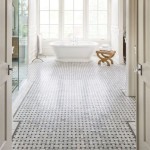How Much Does Laminate Flooring Cost To Install?
Laminate flooring offers a cost-effective and aesthetically pleasing alternative to hardwood, tile, or stone. Its durability, ease of maintenance, and wide variety of styles make it a popular choice for homeowners. Understanding the cost of laminate flooring installation is crucial for budgeting and ensuring a successful home improvement project. This article provides a comprehensive overview of the factors influencing laminate flooring installation costs.
The total cost of laminate flooring installation comprises several components, including the cost of the laminate flooring material itself, underlayment, labor, and any necessary preparation work. Each of these factors contributes significantly to the overall expense, and understanding their individual impact is essential for accurate budgeting. A detailed breakdown of these components is provided below.
Laminate flooring is known for its relative affordability compared to solid hardwood. The price per square foot can vary widely depending on the quality, thickness, texture, and brand of the laminate. Lower-end options may start at around $1 per square foot, while higher-end, thicker, and more realistic-looking laminates can cost upwards of $5 per square foot. Exotic finishes and enhanced features, such as water resistance or attached underlayment, will also increase the material cost.
The area to be covered with laminate flooring is a primary driver of material cost. Larger rooms obviously require more materials, leading to a higher overall expenditure. Accurate measurements are crucial to avoid purchasing too much or too little flooring. It is standard to add an extra 5-10% to the measured square footage to account for waste due to cuts and pattern matching, particularly in rooms with irregular shapes or numerous corners.
Underlayment is a thin layer of material installed between the subfloor and the laminate flooring. It provides a smooth, even surface for the laminate, reduces noise transmission, and offers some degree of moisture protection. While some laminate flooring products come with pre-attached underlayment, others require a separate layer. The cost of underlayment typically ranges from $0.30 to $1 per square foot, depending on the material and its features. Thicker, denser underlayments offer superior sound insulation and moisture resistance, which will increase the cost.
The labor cost for installing laminate flooring is a significant portion of the total expense. Labor rates vary depending on the geographic location, the complexity of the installation, and the experience of the installer. Generally, labor costs range from $1 to $4 per square foot. More intricate patterns, such as herringbone or diagonal layouts, will command higher labor rates due to the increased time and skill required.
Several factors influence the labor cost of laminate flooring installation. The size and shape of the room, the condition of the subfloor, and any necessary preparation work can all impact the time and effort required for the installation. Rooms with many corners, doorways, or other obstructions will take longer to install than simple, rectangular rooms. Uneven or damaged subfloors may require patching, leveling, or even replacement, which will add to the labor cost. The complexity of the chosen laminate flooring pattern and the installer's experience also affect the labor rate.
Subfloor preparation is often an overlooked but crucial aspect of laminate flooring installation. A properly prepared subfloor ensures a stable and level surface for the laminate, preventing issues such as buckling, squeaking, and premature wear. Subfloor preparation may involve removing existing flooring, patching holes or cracks, leveling uneven areas, and ensuring the subfloor is clean and dry. The cost of subfloor preparation can vary significantly depending on the condition of the existing floor.
Removing existing flooring can add to the overall cost. Removing old carpet is typically less expensive than removing tile or hardwood, which may require specialized tools and techniques. The disposal of the old flooring materials can also incur additional fees. If the subfloor is damaged or uneven, patching compounds or self-leveling concrete may be required to create a smooth and level surface. These materials can add to the material cost, and the labor involved in applying them will increase the overall installation cost.
Additional costs associated with laminate flooring installation may include the purchase of tools and equipment, trim and molding, and furniture removal and replacement. While professional installers typically provide their own tools, homeowners who choose to install the flooring themselves will need to purchase or rent the necessary equipment, such as a tapping block, pull bar, saw, and measuring tape. Trim and molding are used to cover the edges of the flooring and provide a finished look. The cost of trim and molding depends on the material and style chosen. Furniture removal and replacement can also add to the total cost, especially if heavy or bulky items are involved.
Geographic Location's Impact on Installation Costs
The geographic location significantly influences the cost of laminate flooring installation. Labor rates and material costs vary considerably across different regions. Areas with a higher cost of living typically have higher labor rates for installation services. The availability of installers and the demand for flooring services can also affect labor costs. Regions with a high demand for flooring services and a limited number of installers may experience higher labor rates. Material costs can also vary depending on the distance from manufacturers and suppliers. Transportation costs can increase the price of laminate flooring materials in remote areas.
Major metropolitan areas generally have higher labor costs compared to smaller towns or rural areas. The cost of living in major cities is typically higher, which necessitates higher wages for skilled tradespeople, including flooring installers. The demand for home improvement services is also often higher in densely populated areas, which can further drive up labor rates. It is important to obtain multiple quotes from local installers to compare prices and ensure fair market value.
Regional variations in material costs can also be significant. Laminate flooring materials may be more readily available and less expensive in regions closer to manufacturing centers or distribution hubs. Transportation costs and local market conditions can influence the price of flooring materials. Homeowners should compare prices from different suppliers to ensure they are getting the best possible deal on the laminate flooring and underlayment.
Laminate Quality and Its Price Implications
The quality of the laminate flooring directly impacts its cost. Higher-quality laminates are typically thicker, more durable, and offer a more realistic appearance. These features command a higher price compared to lower-quality options. Consider the intended use of the flooring and the level of traffic it will endure when selecting the appropriate quality of laminate. High-traffic areas, such as hallways and kitchens, require a more durable and wear-resistant laminate than low-traffic areas, such as bedrooms.
Laminate flooring is graded based on its abrasion resistance, which is measured using the Abrasion Class (AC) rating. The AC rating indicates the flooring's ability to withstand wear and tear. AC1 and AC2 ratings are suitable for residential use with light to moderate traffic, while AC3, AC4, and AC5 ratings are appropriate for residential and commercial use with moderate to heavy traffic. Higher AC ratings correspond to greater durability and a higher price point. Selecting the appropriate AC rating for the intended application is crucial for ensuring the longevity and performance of the flooring.
The thickness of the laminate flooring also influences its cost and durability. Thicker laminates generally offer better sound insulation and a more solid feel underfoot. They are also more resistant to dents and scratches. Laminate flooring thickness typically ranges from 6mm to 12mm. Thicker laminates, such as 10mm or 12mm, are often preferred for high-traffic areas or for homeowners seeking a more luxurious feel. The cost per square foot will increase with the thickness of the laminate.
The visual appearance of the laminate flooring also affects its price. Realistic-looking laminates that mimic the appearance of natural wood or stone are generally more expensive than simpler, more generic designs. Embossed or textured surfaces that replicate the grain and texture of natural materials add to the realism and cost. The quality of the print and the accuracy of the color matching also contribute to the overall appearance and price of the laminate.
DIY vs. Professional Installation: A Cost Comparison
Homeowners have the option of installing laminate flooring themselves (DIY) or hiring a professional installer. Each option has its advantages and disadvantages in terms of cost, time, and effort. A DIY installation can save on labor costs, but it requires time, effort, and some level of skill. Professional installation ensures a high-quality finish and can save time and hassle, but it comes at a higher cost.
DIY installation can significantly reduce the overall cost of the project by eliminating labor charges. However, it requires careful planning, preparation, and access to the necessary tools and equipment. Homeowners should assess their skills and experience honestly before attempting a DIY installation. Mistakes can be costly and time-consuming to correct. Renting or purchasing tools and equipment can also eat into the potential savings. If mistakes are made that ruin materials, the overall cost may exceed if a professional had been hired in the first place.
Professional installation offers several advantages, including expertise, efficiency, and a warranty on the workmanship. Professional installers have the experience and skills to ensure a high-quality finish and can handle complex installations with ease. They also have access to specialized tools and equipment that may not be available to homeowners. A professional installation typically comes with a warranty, which provides peace of mind and protects against defects in workmanship. While professional installation is more expensive upfront, it can save time, hassle, and potential costly mistakes in the long run.
When deciding between DIY and professional installation, consider the size and complexity of the project, the homeowner's skills and experience, and the budget. Small, simple rooms may be suitable for DIY installation, while larger, more complex projects are best left to the professionals. Obtain multiple quotes from qualified installers to compare prices and ensure a fair market value. Weigh the potential savings of DIY installation against the value of the expertise and warranty offered by professional installers.
In summary, the cost of laminate flooring installation is influenced by a variety of factors, including the quality and type of laminate flooring, the size of the area to be covered, the complexity of the installation, the geographic location, and the choice between DIY and professional installation. Understanding these factors is crucial for accurate budgeting and making informed decisions about your flooring project. By carefully considering all aspects of the installation process, homeowners can achieve a beautiful and durable laminate floor while staying within their budget.

Cost To Install Laminate Flooring A Complete Guide 2024 Forbes Home

2024 Laminate Flooring Installation Cost Guide Angi

How Much Should Laminate Flooring Fitting Cost In 2024 Checkatrade

What S The Cost To Install Laminate Flooring Flooringstores

How Much Does It Cost To Install Laminate Flooring Homeserve Usa

2024 Laminate Flooring Installation Cost Guide Angi

Flooring Installation Cost 2024 Guide Modernize

Laminate Flooring Installation 2024 Cost Guide Modernize

What Is The Cost To Remove Carpet And Install Laminate Flooring

How Much Does It Cost To Install Flooring Floors Touch
